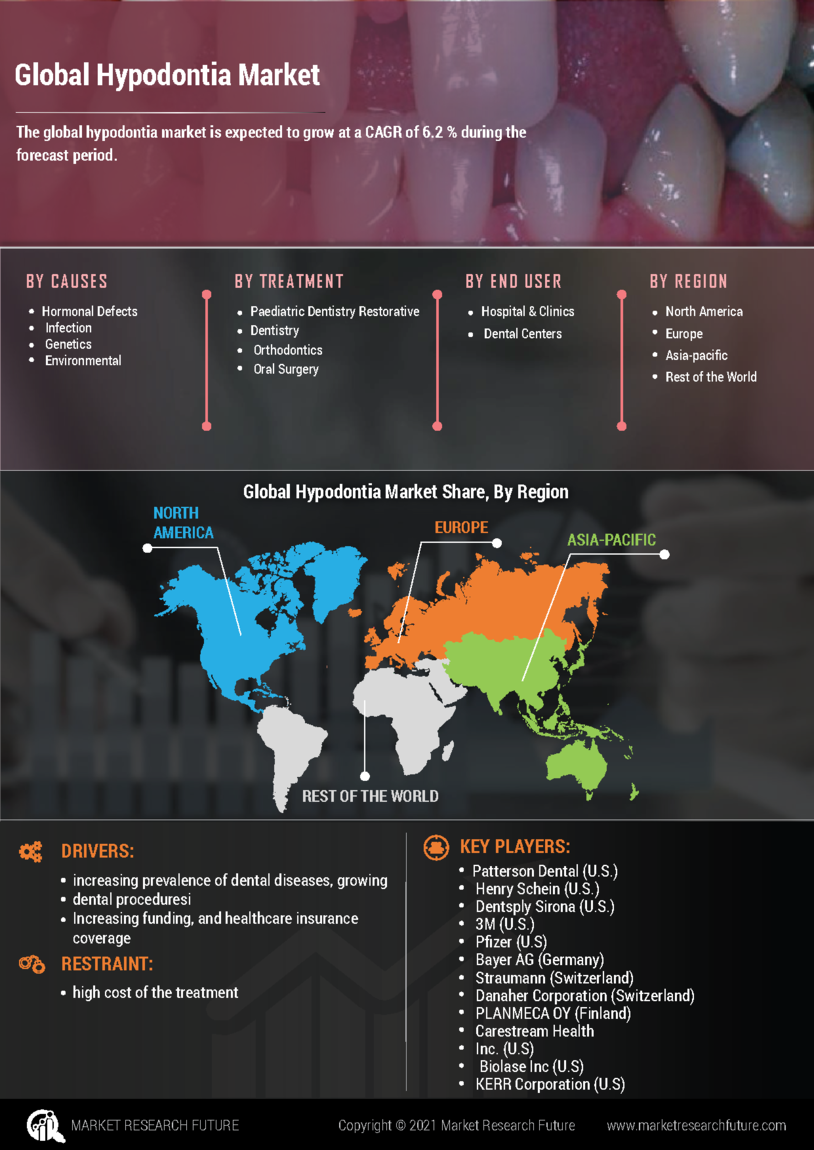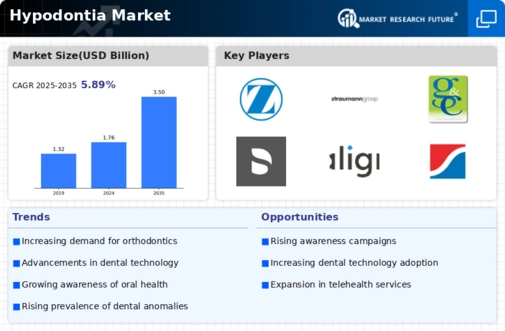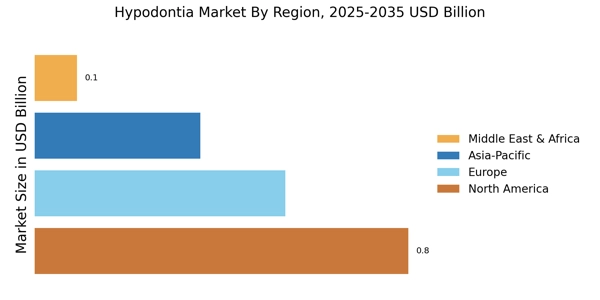Rising Geriatric Population
The aging population is a significant factor influencing the Hypodontia Market. As individuals age, the likelihood of tooth loss increases, leading to a higher prevalence of hypodontia among older adults. This demographic shift is prompting a greater need for dental care services tailored to the elderly. The demand for dentures, implants, and other restorative solutions is expected to rise as the geriatric population continues to grow. Additionally, healthcare policies focusing on improving dental care for seniors may further stimulate the Hypodontia Market. The intersection of an aging population and increased healthcare access suggests a promising outlook for market growth in the coming years.
Advancements in Dental Technology
Technological innovations are transforming the landscape of the Hypodontia Market. The introduction of advanced imaging techniques, such as 3D scanning and digital impressions, enhances the accuracy of diagnosis and treatment planning. Furthermore, the development of biocompatible materials for dental implants and prosthetics is improving patient outcomes. These advancements not only streamline the treatment process but also reduce recovery times, making dental care more accessible. As technology continues to evolve, it is anticipated that the Hypodontia Market will experience significant growth, driven by the demand for more effective and efficient treatment options. The integration of artificial intelligence in treatment planning may also play a role in optimizing patient care.
Increasing Prevalence of Hypodontia
The rising incidence of hypodontia is a notable driver in the Hypodontia Market. Studies indicate that approximately 3 to 10% of the population is affected by this condition, which leads to a growing demand for dental solutions. As awareness of dental health increases, more individuals seek treatment for missing teeth, thereby propelling market growth. The need for orthodontic interventions and prosthetic solutions is likely to rise, as untreated hypodontia can lead to further dental complications. This trend suggests that dental professionals will need to adapt their practices to accommodate the increasing number of patients requiring specialized care. Consequently, the Hypodontia Market is expected to expand as more individuals are diagnosed and treated for this condition.
Growing Demand for Aesthetic Solutions
The increasing emphasis on aesthetics in dental care is a critical driver for the Hypodontia Market. Patients are becoming more conscious of their appearance, leading to a heightened demand for cosmetic dental procedures. This trend is particularly evident among younger populations who seek to enhance their smiles. As a result, dental practitioners are more frequently offering aesthetic solutions, such as veneers and implants, to address hypodontia. Market data suggests that the cosmetic dentistry segment is experiencing robust growth, which is likely to influence the overall Hypodontia Market positively. The desire for improved aesthetics may encourage more individuals to seek treatment, further driving market expansion.
Increased Focus on Preventive Dental Care
The shift towards preventive dental care is emerging as a vital driver in the Hypodontia Market. Patients and healthcare providers are increasingly recognizing the importance of early intervention in preventing dental issues, including hypodontia. Educational initiatives aimed at promoting oral health awareness are likely to lead to earlier diagnoses and treatment. This proactive approach may reduce the incidence of severe dental problems, thereby influencing the demand for restorative solutions. As preventive care becomes more integrated into dental practices, the Hypodontia Market may witness a transformation, with a focus on maintaining dental health rather than solely addressing existing issues. This trend could lead to a more sustainable market growth trajectory.


















Leave a Comment